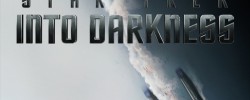
Review: Man of Steel (2013)

Cast: Henry Cavill, Amy Adams, Michael Shannon
Director: Zack Snyder
Country: USA | Canada | UK
Genre: Action | Adventure | Fantasy | Sci-Fi
Official Trailer: Here
Editor’s Note For an alternative perspective on Man of Steel, see David’s review.
Rare is the big screen comic book adaptation that begins with the superhero’s literal birth, but that’s exactly what Man of Steel, Zack Snyder’s (Watchmen, 300) reboot of the Superman mythos does, with Superman’s mother, Lara Lor-Van (Ayelet Zurer) giving a technology-free birth to Kal-El (Superman’s Kryptonian name) with the able, not to mention sole, assistance of her scientist husband, Jor-El (Russell Crowe). Shot in tight, claustrophobic close-ups, the opening scene in Man of Steel signals Snyder’s attempt to turn the Superman mythos into a personal, intimate story - until, of course, genre demands take over and Man of Steel devolves into a CG-heavy punch-up between super-powered antagonists, first in Smallville, Superman’s adopted hometown, and later in the budget-busting climax set mostly in Metropolis, DC’s fictionalized version of New York City. Before we get to that draining, fatiguing climax, however, Man of Steel more than accomplishes Snyder’s goal of reimaging Superman for the second decade of the 21st century.
Working from a screenplay credited to David S. Goyer (The Dark Knight trilogy, the Blade trilogy) and a story co-credited to Goyer and producer Christopher Nolan, Snyder foregoes a linear, literal origin story for one heavy on associative flashbacks that highlight key moments from Superman’s formative years…
Kal-El also starts the doomsday clock ticking on Krypton, figuratively, if not literally. No longer the crystalline ice planet familiar from Richard Donner’s 1978 film, Superman (a.k.a. Superman: The Movie) and the three sequels that followed, Krypton is a dry-rust planet filled with mountains, canyons, and Avatar-inspired fauna. It’s also mere hours from complete annihilation, but Krypton’s intransigent ruling council rejects Jor-El’s warnings of impending doom. General Zod (Michael Shannon), Jor-El’s one-time ally and Krypton’s military leader, unequivocally accepts Jor-El’s prognostication, but preferring force to reason, stages a short-lived military coup that leaves Zod and his co-insurrectionists convicted of treason and exiled to the Phantom Zone. Before Krypton implodes, Jor-El and Lara send Kal-El to Earth where they hope his physical advantages will both protect him and make him a standard-bearer for a better, more tolerant world.

Working from a screenplay credited to David S. Goyer (The Dark Knight trilogy, the Blade trilogy) and a story co-credited to Goyer and producer Christopher Nolan, Snyder foregoes a linear, literal origin story for one heavy on associative flashbacks that highlight key moments from Superman’s formative years, from the day a preteen Clark experienced his superpowers for the first time, to a school bus accident where Clark, not yet aware of his Kryptonian heritage, saves his classmates in dramatic fashion, a decision that perturbs Clark’s protective adopted father, Jonathan Kent (Kevin Costner), to a present-day, bearded Clark (Henry Cavill), wandering semi-aimlessly from blue-collar job to blue-collar job either to find himself (and his vocation) or to avoid finding himself and his place in the world. These early scenes also encapsulate Snyder, Goyer, and Nolan’s desire to make Superman a relatable character to contemporary audiences by depicting the universal aspirations that drive him and the connections to his adopted family that ground him.
Clark’s wanderings come to an abrupt end when he overhears Canadian soldiers discussing the discovery of an unknown object under the Arctic ice. It’s there that Clark encounters the equivalent of the Fortress of Solitude (a Kryptonian scout ship) and crosses paths with Lois Lane (Amy Adams), a globe-trotting investigative reporter for the Daily Planet, Metropolis’ leading newspaper. The ship’s activation also allows a long-freed Zod and his supporters to pinpoint Kal-El’s location. Within minutes (of screen time), Zod’s ship no only makes first contact – echoes of Independence Day (among others, including the Matrix trilogy) – but also announces Kal-El’s existence among human kind. Even more convinced of the rightness of his actions (as any good villain, super or otherwise, should be), Zod lays down an ultimatum: Turn over Kal-El or the world will suffer his wrath (of the not-quite Khan kind).
There’s bloat in that third act, no doubt a conscious decision to give audiences what Superman Returns failed to give them seven years ago: Superman facing off against super-powered equals and not, as in Superman Returns, a non-super-powered Lex Luthor again.
Zod’s motivations involve a reboot of a sort too, a new Krypton where his people can flourish again. Of course, that puts him into direct conflict with Superman who, forced to side with Zod or his adopted world, chooses the latter, and the first of two epic-scaled battles between Zod’s supporters and Superman (the U.S. military might proves near-futile) in Smallville – a callback to a similar, much smaller scaled scene from Superman II – and the superhero vs. supervillain(s) punch-up to end superhero vs. supervillain(s) punch-up in Metropolis where, for the second time in just over a month (Star Trek Into Darkness was the other), entire city blocks bear the brunt of the battle, intentionally or, less likely, coincidentally reminding moviegoers of 9/11 and its aftermath. It’s not just buildings that fall, of course, but the (unseen) people inside them who perish in the thousands, if not the tens of thousands. That realization alone should be enough to make even the most jaded moviegoer hold their applause when CG spectacle completely takes over the screen for Man of Steel’s third act.
There’s bloat in that third act, no doubt a conscious decision to give audiences what Superman Returns failed to give them seven years ago: Superman facing off against super-powered equals and not, as in Superman Returns, a non-super-powered Lex Luthor again. For better or for worse, Man of Steel represents the current state of big-budget superhero-themed filmmaking, albeit with a darker, more resonant (and yes, more serious) tone than anything found in Marvel’s big-screen superheroes. No one can argue moviegoers haven’t embraced the Marvel model (because they undoubtedly have), but Warner Bros. attempt to go in a different direction has had its payoffs too with the standard-setting Dark Knight trilogy and now Man of Steel. Hopefully, mainstream audiences will embrace the latter like they did the former.
Related Posts
![]()
Mel Valentin
![]()
Latest posts by Mel Valentin (see all)
-
Bryan Murray






























